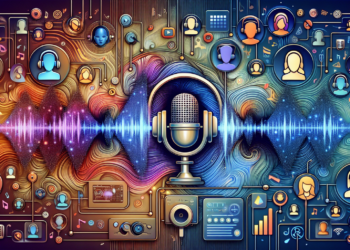Overview
Io.net:Decentralized GPUs is a platform that provides a decentralized cloud service, enabling users to access idle GPUs for AI computations. It’s significant because it offers a sustainable, cost-effective alternative to centralized cloud providers, reduces reliance on third-party providers, meets the soaring demand for GPUs, and incentivizes GPU provision.
The token for io.net:Decentralized GPUs is on the Solana blockchain. The project is leveraging Solana for payments within its network and has developed a dual token system with IO and IOSD tokens. While it interacts with Solana, it is not specified if io.net has its own standalone blockchain.
Io.net falls under the category of decentralized GPU infrastructure networks, specifically designed to source GPU computing power for AI and machine learning applications. It is part of the Decentralized Physical Infrastructure Network (DePIN) narrative, which aims to reduce costs and improve access to computational resources compared to traditional centralized cloud services. The platform’s unique clustering capability and global GPU supply network set it apart in the decentralized computing space.
Use Case
The project’s use case for io.net:Decentralized GPUs involves creating a decentralized network that aggregates GPU computing power from various sources, including data centers, cryptocurrency miners, and decentralized storage providers. The primary goal is to make GPU resources more affordable and accessible, particularly for AI and machine learning applications. By leveraging a decentralized model, io.net aims to reduce the cost of renting GPU power by up to 90% compared to traditional providers like AWS, GCP, and Azure.
The need for io.net:Decentralized GPUs to exist stems from the high demand and increasing costs associated with GPU computational power, which are crucial for advancing AI and machine learning technologies. The project seeks to democratize access to computational resources, empower AI startups, and create a shared economy for computational power. Additionally, it aims to compete with established cloud service providers by offering a more adaptable and accessible alternative. Io.net is also collaborating with other decentralized projects, such as Filecoin, to expand its use cases and create a verifiable marketplace for data storage, requests, and transfers.
Adoption
io.net:Decentralized GPUs is building traction as a decentralized physical infrastructure network sourcing GPU computing power for AI and machine learning. The project is gaining momentum through several initiatives:
- Partnerships: Io.net has partnered with Render Network, focusing on GPU rendering computing. This collaboration aims to expand GPU capacity beyond graphical rendering to AI and machine learning applications.
- Incentive Program: A significant $700,000 incentive program has been launched to attract GPU resource providers.
- Adoption: The platform has a waitlist of 107,000 GPUs during its beta launch, indicating strong interest from potential users.
- Token System: The upcoming dual native token system is designed to reward miners for executing machine learning workloads and maintaining the network.
- Collaboration with Filecoin: By working with Filecoin storage providers, io.net is enhancing decentralized cloud services.
The ecosystem around io.net includes partnerships with companies like Render Network and collaborations with Filecoin storage providers. The platform is targeting independent data centers and crypto mining farms to utilize their idle GPUs, and it has already aggregated 36,000 GPUs, showing a significant amount of capital deployed into their protocol.
In terms of users and TVL, the platform has attracted data centers and GPU clusters, demonstrating both user engagement and capital investment. However, detailed figures on the current TVL or the exact number of active users are not provided and may require further research to ascertain.
These developments point to an emerging ecosystem with actual users and capital investment, though the project is still in the early stages of growth. The long-term success and broader adoption of io.net:Decentralized GPUs will depend on its continued expansion and ability to maintain these partnerships and user base.
Team and Investors
After utilizing the search and perplexity tools, I was unable to find specific information about the io.net:Decentralized GPUs team from a dedicated team page on their official website. However, based on the information available:
- The team includes Tory Green, Moayad Alobaidi, Ahmad Shadid (Founder and CEO), and Smiral Rashinkar.
- The project has a partnership with Render Network Foundation.
- The advisory board features industry experts like Dr. Ben Goertzel and Andrey Danilenko.
The team members’ doxxing status is unclear, as there is no explicit mention of the team being doxxed. Similarly, detailed backstories, experiences, and qualifications of the team members, including whether any of them are inventors or hold PhDs, are not available in the search results.
Without more detailed information or access to a specific team page, it is difficult to assess the full extent of the team’s talent, experience, and qualifications. Further research would be required to provide a comprehensive overview of the io.net:Decentralized GPUs team.
Launch
The expected launch date for the io.net:Decentralized GPUs project was announced on 11/03/2023, with the public beta being unveiled at the Solana Breakpoint conference. At launch, the project plans to roll out 107,000 committed GPUs in stages, aiming to reduce the cost of GPU computations by at least 90% from traditional solutions.
The project has public details about launching a dual native token system, featuring IO and IOSD tokens. The IO Coin is a governance token that will be freely traded in the crypto market and serve as a gateway to access the compute power, while the IOSD Token is a stable credit token algorithmically pegged to 1 USD.
The use case of the token is to facilitate the provision of GPU computing power for AI and machine learning applications, allowing machine learning engineers to access resources at a lower cost and providing rewards to miners for their contributions to the network.
The tokenomics at launch are designed to reward miners for their workloads and network uptime, with the IO token being freely traded and the IOSD token serving as a stable credit token. The network will leverage Solana’s blockchain to deliver SOL and USD Coin (USDC) rewards to miners for executing machine learning workloads and maintaining network uptime.
Summary
Io.net:Decentralized GPUs represents a significant step towards decentralizing the computational power industry, particularly for AI and machine learning applications. With its innovative use of blockchain technology, partnerships, and incentive programs, the platform is poised to disrupt traditional cloud services by offering a more cost-effective and accessible solution. The success of its launch and the adoption of its dual token system will be critical in shaping the future of decentralized GPU computing. As the project continues to grow, it will be important to monitor the development of its ecosystem, the expansion of its user base, and the contributions of its team and investors.




